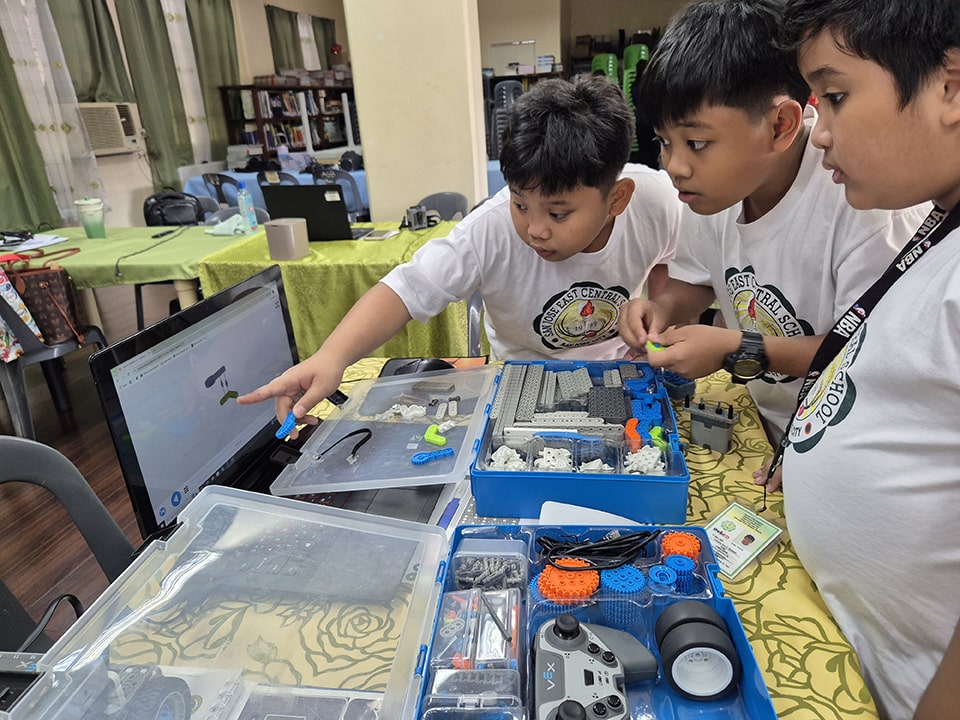 Grade schoolers build a BaseBot using online instructions.
Grade schoolers build a BaseBot using online instructions.
The Southeast Asian Regional Center for Graduate Studies and Research in Agriculture (SEARCA), in partnership with the Central Luzon State University (CLSU), rolled out a series of introductory training sessions on agri-robotics for young learners. The activity is part of the project titled Agri-robotics Education for Young Learners jointly implemented by SEARCA through its Emerging for Growth Department (EIGD) and CLSU's Precision and Digital Agriculture Center (PreDiCt).
The training engaged selected students from Grades 5 and 6, and junior and senior high school levels. Participants came from the School Division Offices (SDOs) of Muñoz (26-27 February) and San Jose (13-14 March), as well as from the CLSU Science High School and CLSU Laboratory for Teaching and Learning-Agricultural Science and Technology School (CLTL-ASTS), who took part in the final leg on 9-10 April 2025.
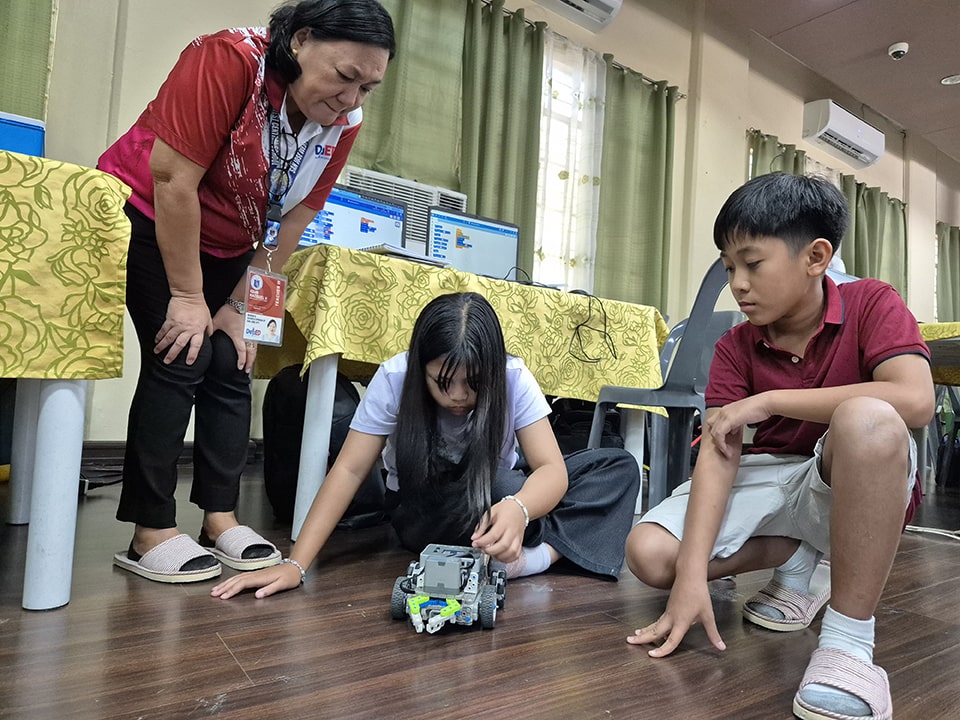 Training instructors from San Jose oversee students' coded agri-robot.
Training instructors from San Jose oversee students' coded agri-robot.
 Training instructors from Science City of Muñoz guide students on different robot components.
Training instructors from Science City of Muñoz guide students on different robot components.
The training series introduced students to the integration of agriculture and robotics through structured learning sessions and hands-on activities. Faculty members from the participating schools served as training instructors anddelivered lectures on agricultural operations and machinery, agricultural robotics and components, basic programming, and motors, sensors and signal processing for agricultural robotics. These teachers had previously completed a training of trainers course led by SEARCA and CLSU's experts to build their capacity to teach agri-robotics effectively.
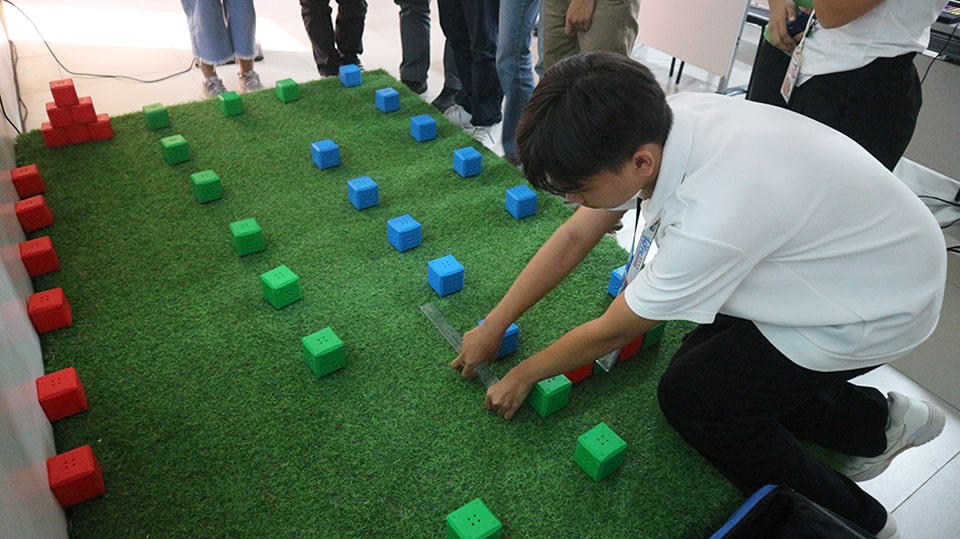 Students study the activity field for the agri-robotics challenge.
Students study the activity field for the agri-robotics challenge.
To reinforce the technical concepts, learners participated in various hands-on activities that demonstrated real-world agricultural applications of robotics. One challenge involved building and programming a robot to autonomously follow a line, mimicking monitoring of crops planted in rows. Another tasked the students with designing a robot with claws that is capable of automatic color sorting to simulate a fruit grading process by distinguishing between green (ripe) and red (unripe) cubes using sensors and coded instructions and automating picking and segregation of the harvest.
These training sessions are part of SEARCA's agri-robotics project. The aim is to transform how students perceive agriculture—shifting from traditional practices to more modern, technology-driven methods that apply cutting-edge tools such as robotics and artificial intelligence.
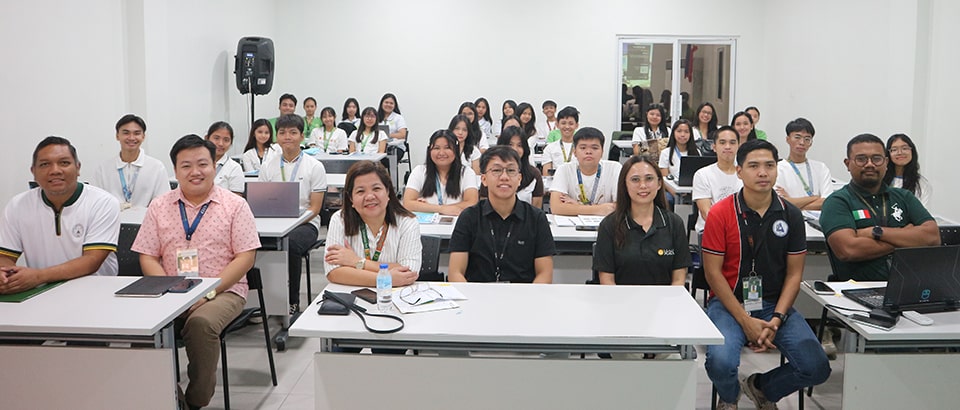 Participants from CLTL-ASTS at the training held on 9-10 April 2025.
Participants from CLTL-ASTS at the training held on 9-10 April 2025.
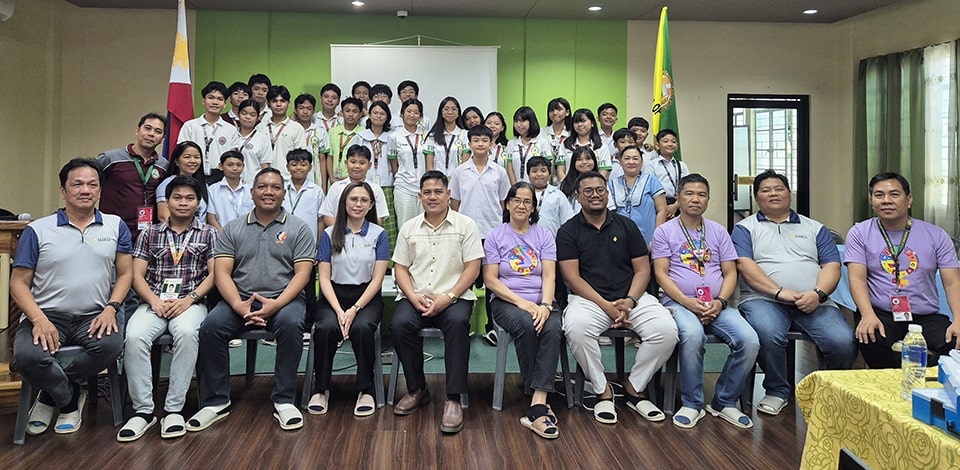 Student participants and training instructors in San Jose, Nueva Ecija.
Student participants and training instructors in San Jose, Nueva Ecija.